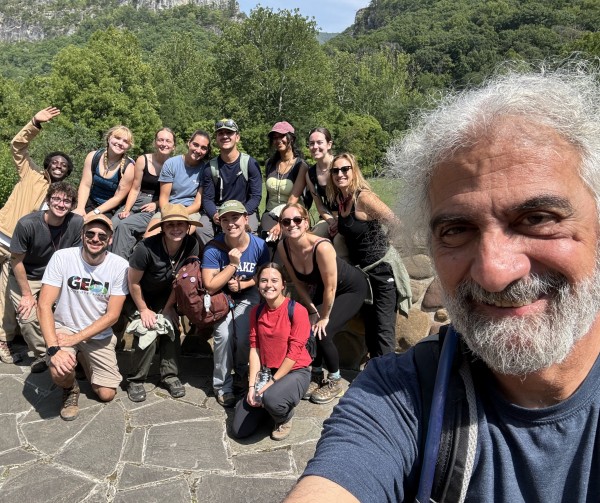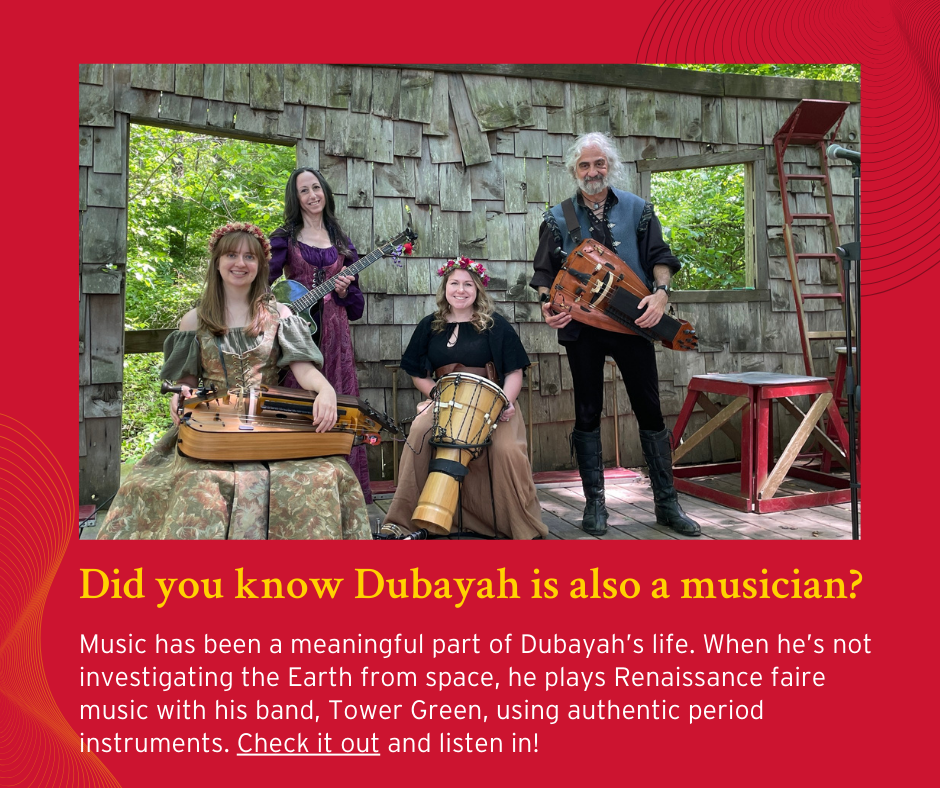From Star Gazer to Earth Gazer: The Path of Professor Ralph Dubayah
With a deeply independent spirit, Dubayah’s fascination with the natural world carried him from childhood exploration to pioneering satellite research.
Growing up in San Francisco, California, Professor Ralph Dubayah experienced freedom, adventure and a world that invited exploration. The youngest of six children, he had what he describes as a kind of childhood that’s rare today.
“I would leave the house in the morning and come back at night,” he said. No phones, no check-ins: just him and his bike. Living on Fulton Street, right across from Golden Gate Park, he’d often ride to a quiet spot near the Academy of Sciences or head downtown to the library.
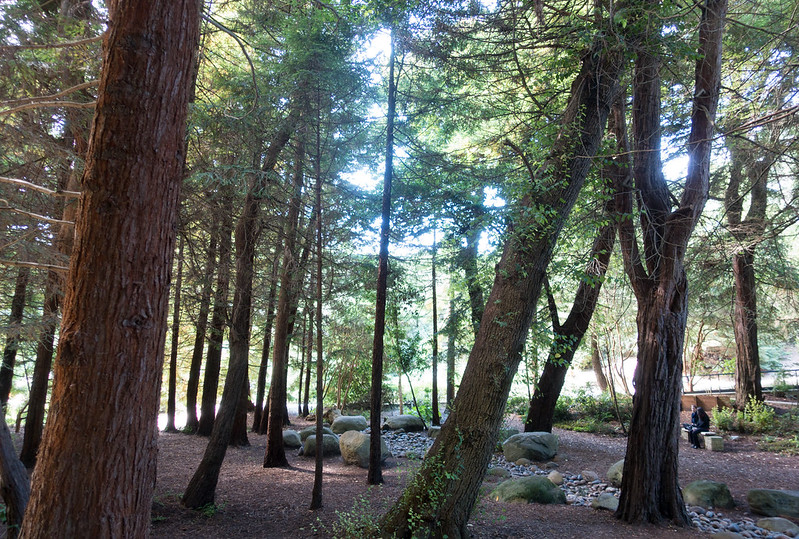
“I’d bring a book, and I really like eating sunflower seeds. So I would just sit on the bench, and I could sit there for like two or three hours eating sunflower seeds and reading,” Dubayah recalled. “I read a ton of science fiction, a ton of fantasy, and I just loved reading. And to me that was like a perfect afternoon.”
Dubayah was the only one of his siblings born in the United States. His mother, an Armenian born in Turkey, fled the genocide as a child and resettled in Lebanon, where she later met his father, a Jordanian newspaper publisher. “He had to leave the country because of some anti-British editorials,” Dubayah said. The couple eventually immigrated to the U.S., where his father first opened a small grocery store and later found success in real estate.
When Dubayah was about 10 years old, San Francisco was in the thick of the hippie era, a hub for counterculture and anti-war activism. His older siblings, teenagers at the time, introduced him to bands like Grateful Dead, The Rolling Stones and Led Zeppelin. It wasn’t the typical soundtrack for someone his age, but it resonated with him.
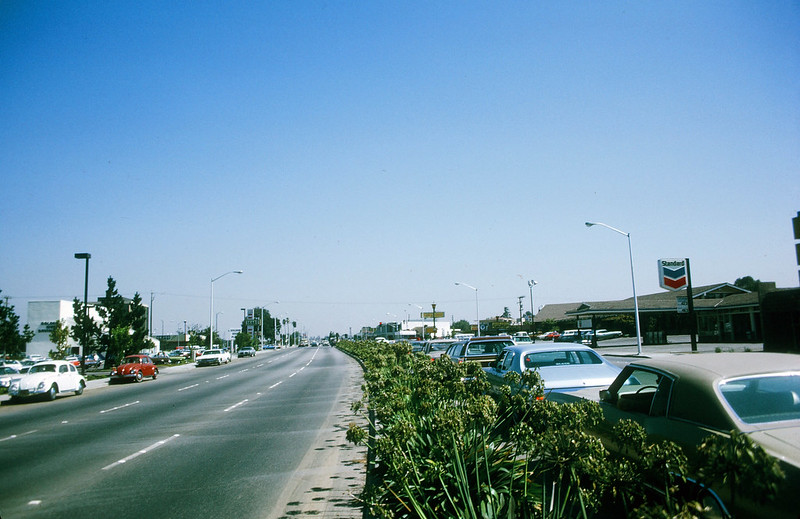
Dubayah’s interest in space began early. His favorite show was Star Trek, and after it was canceled, he would watch reruns religiously. “I became totally absorbed with space,” he remembered. He spent hours staring at the night sky and even rode 30 miles to Palo Alto along El Camino Real to buy an eyepiece for a telescope he was making. Other children would have asked their parents for a ride, but not Dubayah, who biked four hours each way.
“I was fascinated by the outdoors, by mountains and forests, and by the night sky,” he said. “I spent a lot of time exploring and observing, which shaped my interests in both physics and geography.”
A Fascination with the Stars
In high school, he took an after-school astronomy class taught by a teacher who also narrated shows at the Planetarium at the California Academy of Sciences: “He had a wonderful voice. It was very dramatic, and he was a super nice man.”
Between his junior and senior years, Dubayah enrolled in an intensive summer program focused on astronomy. “I was the worst student in the program, because I just had not had enough math,” he said. “Most of these kids had already had calculus.” The course taught students enough math, physics and astronomy to be able to determine the orbit of an asteroid.
“We were placed into small groups and you had to get up at all hours taking a photograph of the sky through a large telescope that captured your asteroid. You then had to compare these images of hundreds of stars on three different dates and find the one point of light that moved. By measuring this motion, you could calculate its orbit. So it was pretty intense but super fun.”
When it came time for college, Dubayah enrolled at UC Berkeley, starting in physics and astronomy. He was a decent student, but the program was not what he had expected, with an immense focus on physics and math, and very little astronomy. His GPA fell below 2.0, so he withdrew for a quarter and went backpacking in the Sierra Nevada.
From Astronomy to Geography
Back in college, Dubayah decided to switch his major to geography. “I was interested in physical geography from growing up next to the park and going to the natural history museum so often,” he said. “I didn’t know that you could study remote sensing or forests or land-atmosphere interaction. I was just sort of wandering.”
He took five years and a quarter to earn his bachelor's degree in geography from Berkeley. The extra quarter came after he failed a course called “Geography of Brazil,” which seemed easy, so he started skipping classes and his lack of attendance did him in.
By the time he graduated, his GPA was 2.6 overall (but much higher in geography), and he wasn’t sure what would come next. After a few discouraging months of looking for work, he eventually landed a job at the nearby John Muir Institute.
There, he worked on sustainable timber harvest plans, helping to digitize maps and support environmental assessments. The job gave him real experience with remote sensing and GIS. Just as importantly, he found himself surrounded by a small team of young Ph.D.s, who were engaged, supportive and doing work that felt worthwhile.
At the end of that year, he decided to go back to school. He applied to several programs, including UC Santa Barbara, though he thought he had no chance. But he had an unexpected ally: a meteorology grad student who had taught his Berkeley class, Joel Michaelsen, was now on the UCSB faculty. “I think he remembered how well I’d done in his classes and maybe saw my potential.”
Then came the envelope: thick, unmistakable, and marked “YAY!” by his housemates. He’d been accepted. “That’s when my career really started,” he said. “But it wasn’t a straight path.”
Winding Roads to Remote Sensing
Dubayah went on to complete both his master’s and Ph.D. at UC Santa Barbara, focusing on the growing field of spatial analysis and remote sensing.
He had started out studying El Niño—interesting, but not what he cared most about. His heart was in satellite data and remote sensing. He switched advisors to Jeff Dozier, whose course on the physics of remote sensing had lit a spark. “I love this: You know how photons get from the surface and through trees and back to the sensor and how they correct for the atmosphere.”
For his master’s studies, Dubayah expanded on an idea from undergrad, using topographic data to create 3D visualizations. At Berkeley, he and his girlfriend had once spent hours digitizing elevations from a Mount St. Helens map, punching data into cards to run on a mainframe. At Santa Barbara, he figured out how to drape real satellite imagery over digital terrain models. That became his first publication.
Toward the end of his master’s, another professor invited him to pursue a NASA fellowship focused on early machine learning. Dubayah spent two summers at NASA Ames, experimenting with neural nets in their infancy. That was around 1986-87. “Nobody else was doing this … If I’d stuck with it, who knows where I’d be now,” he joked. But the work felt disconnected and isolating, so he returned to Dozier’s lab.
That move led him to a major NASA field campaign (The First ISLSCP Field Experiment - FIFE) in Kansas. Researchers were studying how prairie ecosystems interact with the atmosphere. Surrounded by aircraft, instruments and experts in the field, Dubayah felt at home. He began a dissertation on how topography shapes solar radiation absorption. “I got to go out to that field experiment,” he recounted. “And that to me opened my eyes. That was like, this is ‘big science’ and what I want to do.”
As he was wrapping up at UC Santa Barbara, Dubayah found himself drawn to Buddhism and spiritual exploration. “I realized that there were a lot of different paths one could follow to get to that place of deeper meaning that we all want,” he said. “What was always very important to me is to experience magic in the world.”
Launching a Vision into Space
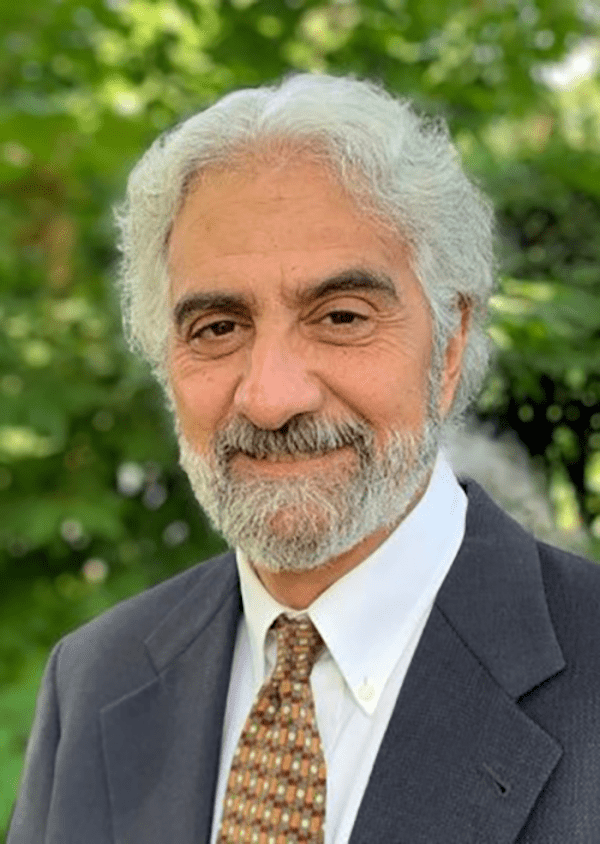 Dubayah was named Distinguished University Professor in 2023.
Dubayah was named Distinguished University Professor in 2023.
Attracted by its strength in remote sensing, Dubayah joined the University of Maryland in 1991. Over the years, his work has explored how to use satellite data to measure the Earth’s land surface, including forests, water and energy exchanges. But it was a pivotal moment in 1995 when NASA launched a call for mission proposals that would shape the next two decades of his career.
With colleagues from NASA Goddard, he had the idea to send a lidar instrument into space to measure vegetation structure. That idea became the Vegetation Canopy Lidar (VCL) mission. The proposal was approved, but after three years of very hard work and persistent laser issues, the mission was canceled.
“There is nothing worse in the world. Maybe next to somebody in your family dying,” he said.
However, that setback didn’t deter him. Over the next decade, he and his colleagues kept refining the proposal. “It basically consumes your whole life to write a proposal to do a space mission,” he said. Finally, in 2015, NASA selected the Global Ecosystem Dynamics Investigation (GEDI) mission, with Dubayah as its principal investigator. GEDI was first launched aboard a SpaceX rocket to the International Space Station in December 2018, and the rest is history.
Holding on to Wonder
Dubayah remains true to his childhood fascination with science. He calls it “the magic that’s in the universe,” something he “can’t explain” but feels deeply. Paraphrasing John Nichols, Dubayah reflected, “We are touched by magic wands for just a fraction of our day … The feeling passes much too quickly. But the remembrance of that, and the anticipation of further miracles keeps you in the battle indefinitely.”
That sense of wonder is alive in his favorite class, the summer "Field Methods" course (GEOG418), which he describes as a “magic place” where students don’t just read about concepts, they experience them firsthand.
He doesn’t chase these moments, but when they come, “you know that they happen,” and that’s what keeps him going. Looking back on childhood curiosity, he asks, “Does your mind feel that different from when you were a little kid? … There’s something in you that’s the same.” Though life may “beat that down,” Dubayah believes “you have to touch into that,” and that’s what he tells his students.
“My best advice is, know what you like to do, and what you think you could be good at, and then do that. Then—it sounds like a platitude— don't give up,” he said. “Leading a space mission is a long way from not being ‘smart enough’ to do astronomy.”
Main image: Dubayah and students take a break during a class in the summer of 2024 in the Monongahela National Forest, West Virginia.
Published on Tue, 09/30/2025 - 14:00


